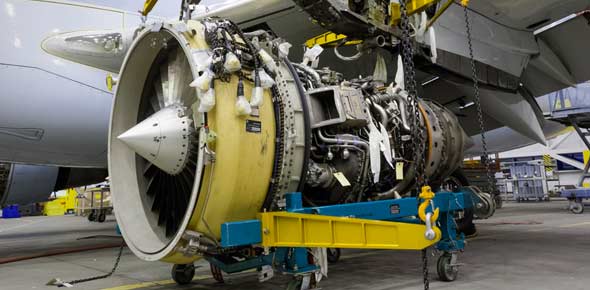(602) What symbol do you enter on the Air Force Technical Order (AFTO)...
(625) To clean dirt and grease from a surface to be sealed, you use
(622) What should you do to an aircraft panel before you fine finish...
(616) How do you apply uniform pressure to laminated fiberglass...
(602) When a new Air Force Technical Order (AFTO) Form 781A is...
(609) Before applying an aerodynamic smoothing compound to repair...
(612) What cardinal rule must be followed when removing damage from a...
(619) How do you determine if water has been removed or has migrated...
(621) Before installing a plastic assembly into its retaining frame,...
(601) Other assemblies are directly or indirectly attached to what...
(625) What do you do if one-part sealant does not go on smoothly,...
(601) What provides shape, strength, and rigidity to the aircraft...
(605) According to the basic principle of repair, when you make any...
(606) An angle drill is used to remove damage when
(620) The sanded area of a scratch is washed down after each sandpaper...
(607) If the location of the rivets on the inner and outer rows of a...
(622) When using an original door as a template, you must make sure...
(625) In order to use premixed frozen sealant, you should
(625) When cleaning a surface before applying a sealant, you can...
(625) When preparing to mix a two-part sealant, you mix the sealant in...
(603) When inspecting for distortions, besides excellent lighting what...
(608) When fabricating a doubler for a flush skin repair in an open...
(621) When disassembling a transparent plastic assembly, what is the...
(601) What reduces sway or yaw about the vertical axis of an aircraft?
(604) When is it acceptable to have bubbles on a plastic window?
(615) When storing advanced composite materials in cold storage, what...
(617) When making a step-joint repair to an aramid honeycomb composite...
(601) Aircraft reference lines that indicate vertical planes parallel...
(605) Before fastening the doubler and filler together for a flush...
(624) Your first step when repairing a defective fillet seal is to
(608) When fabricating a filler plate for a flush skin repair in an...
(609) As it applies to the installation of repair parts, what is a...
(614) To provide a more uniform bondline thickness when making a...
(622) When trimming aircraft panels or doors, you make a template out...
(601) Which of these is an auxiliary flight control?
(603) When performing a visual inspection on nicked plastic...
(610) When welding thermocouples follow the
(619) How many thermocouples are used and how are they positioned on a...
(606) When you're preparing a cutout for an "open area," you remove...
(607) Before you develop a rivet layout for a circular flush repair,...
(602) What block on the Air Force Technical Order (AFTO) Form 781H do...
(606) When repairing damage to an aircraft, the first step in removing...
(618) What step must be taken when doing a partial-through repair that...
(624) You can detect aircraft sealant defects within a pressurized...
(613) When selecting a resin to repair laminated fiberglass...
(614) How do paste adhesives compare with other types as far as...
(623) Which balancing method requires you to know the weight of the...
(611) When drilling aramid composite materials, how can you minimize...
(618) When drilling holes in a delaminated area of a metal-bonded...
(620) What important factor must be known before polishing out a...
(601) When the cockpit control is moved to the right, the right
(604) When classifying damage to a composite structure, a puncture of...
(611) When performing a routing operation on a tapered surface, the...
(617) What is the first step in a scarf repair?
(623) What method of balancing control surfaces allows components to...
(609) The method you use to remove excess aerodynamic smoothing...
(606) You must consider the location of any existing fasteners near a...
(612) What is your first step when fabricating a patch for a composite...
(623) Which balancing method is accomplished on the aircraft?
(606) What factors do you consider when selecting a twist drill to use...
(607) Which layout procedure is very important when developing a rivet...
(608) In which situation is a fastener layout more than likely done on...
(617) What procedure is used in a step-joint removal method?
(608) In addition to the amount of damage to each member, what other...
(607) To properly develop a rivet pattern for a flush skin repair...
















